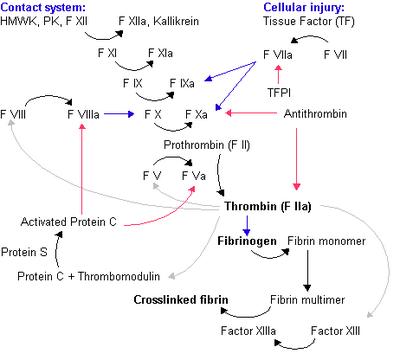References:
Facebook friends a no-no for doctors. Guardian.
Doctors are natural communicators - social media is extension of what they do every day
Comments from Google+:
Steven Eisenberg - Create a circle of patients and share/filter as appropriate? Hmmmm... Thoughts?
Neil Mehta - In real life, what would you do if you run into a patient at a party? At a grocery store? Would BMA ask the docs to not talk with them? Turn their backs? Would that be professional? Do you ask you patients about their hobbies, interests travels? Does it help you become a more patient-centered provider?
Social Media is here to stay. Just as we have boundaries in RL we need to talk about appropriate boundaries in SoMe. The answer is probably use common sense and put the interest of the patient first. In some countries, it is routine practice to give your patient your cell phone number. So does the answer depend on your cultural and societal norms? It is a slippery slope and a number of issues need to be figured out - privacy, reimbursement, liability etc. What if the Social (professional) network exchange was behind appropriate firewalls/tunneled, what if the pts, PHR was accessible? What if we had a ACO model with no fee for service but the system was responsible for keeping their patients healthy?
Jeffrey Benabio, MD - Ves, here's the comment I put on David Lewis's post:
The difficulty is in how we define friends in this space. The doctor-patient relationship is unique and it's difficult (usually impossible) to have both a healthy friendship and healthy doctor-patient relationship without compromising both.
Patients depend on me, not as a friend, but as their physician. The expectations for a friend and a physician are different; it is difficult to have two sets of expectations for the same person.
As a physician, I'm privy to information that is personal, sometimes compromising, and often affects other people that both I and the patient knows. Patients must share things with me that they would never share with a friend. My duty as physician is only to care for her; if she and I were friends, then what she shared with me could be damaging to her in her social or personal life. I could not be both her friend and her physician.
Friends can also sometimes become romantic partners. This is verboten in a doctor-patient relationship.
The relationship between friends must be egalitarian and mutual. This is not true of doctor-patient relationships. I must advise patients what to do. I cannot tell my patients about my problems ("Boy you think that's a rash, look at this one on my leg!").
Their role as patient is to get and stay well. My role is to do everything in my ability to help them achieve that. They pay me to do this. They expect me to do this. There cannot be any reciprocity.
In fact, unlike friends, it's inappropriate for physicians to accept gifts from patients. Do patients who buy me a bottle of wine get special treatment? Do my "friend" patients have special access to me? Special privileges? It would be unfair to all my "non-friend" patients. This is where something innocuous in a friendship becomes unethical in medicine.
I examine, touch and sometimes hurt patients this is unique to medicine. Imagine that I must touch the genitals of a patient to treat him or her. This action has no place in a friendship and both the doctor-patient relationship the friendship would be compromised.
Imagine if a patient found that my political or religious beliefs were inconsonant with his beliefs. This could compromise my ability to be the best physician for him if he was unable to trust me because I was Jewish or Muslim or Catholic. This might force him to find a new physician at a time when he's sick or vulnerable and would compromise his ability to get the best care.
I have a great relationship with my patients; we are friendly and engage in enjoyable conversations about life, politics and the weather. But each of these relationships is a doctor-patient relationship that best serves the needs of the patient above all else.
The problem with social media friendships for physicians is that they're too close to real life friendships. All my online patient friends are "doctor-patient-friends" and I endeavor to keep it that way for their sake.
Steven Eisenberg - Jeffrey- SO well said. Very complex indeed.
Nancy Onyett, FNP-C - I totally agree with Jeffrey Benabio MD. The AMA and ANA for Advanced Practice has these points under the Code of Ethics for Professioal Conduct. Dr. Benabio breaks this down ito layman terms. Great post TY:)
Neil Mehta - Great discussion. Social Media (web 2.0) means a two way discussion as opposed to a static one way lecture (web 1.0). The facebook model is just one type of a social networking model which is one type of social media (medium). Seems professional bodies would not want us to "Friend" our patients and most people would agree. "Friend" is very much a FB term which has a connotation that means Friends see each others posts, photos, videos on Facebook. What do people think of doctor-patient communications using Online Social Media in the broad sense of the term?
Examples include:
A doctor posts some patient education material on YouTube that the patient sees and comments on.
What about the functionality of asymmetric circles? That prevents reciprocity.
We have seen how sending periodic SMS to pts with chronic conditions improves adherence. Is it possible to extend that model?
Nancy Onyett, FNP-C - I feel safer using my own EMR for patient correspondence through encrypted email. I am not sure if creating a circle of patients would be feasible unless it was for education and HIPPA/Privacy would not be violated --may be difficult to do.
Bader ALHablani - Great discussion...please allow me to ask a question here.Quote from the article: "Yet accepting Facebook friends presents doctors with difficult ethical issues," he said. "For example, doctors could become aware of information about their patients that has not been disclosed as part of a clinical consultation." End of quote. Suppose patient XYZ is one of my friends on Google+. And I am following Dr. ABC and vice versa. What would happen when I post an article (to my extended circles) and patient XYZ writes a comment/reply that contain an information which “could [make] Dr. ABC “aware of information about their patients that has not been disclosed as part of clinical consultation”, please? Dr. ABC would be able to see his/her comments, right please?
doc emer - I also have excellent friendship relationships with my online patient-friends in FB. I think it even helps in treatment/management. Problems may occur, as in any form of communicating, but are rare and isolated. A good doctor is friends with his patients, be it online or otherwise.
Michael Zelman - Psychologists have explicit rules about avoiding multiple relationships, being "friends" with patients falls under that category. The intent is to protect the patient and therapeutic relationship between client and professional. There are obvious parallels between physician and patient. This is not to say that every aspect of a social media relationship would be negative, but virtual friending can blur boundaries, change expectations, violate confidentiality, and lead to expectations of more out of the relationship than is healthy or allowed. It may be possible to navigate social media relationships while avoiding multiple relationships with a practitioner as a business; i.e., group practice, hospital, community clinic where patients and community members follow the entity (not individual), but in a 1-way, asymmetric manner as proposed above. Even with that much care is needed to protect patient rights under various Federal and State privacy laws.
http://www.apa.org/ethics/code/index.aspx
"3.05 Multiple Relationships
(a) A multiple relationship occurs when a psychologist is in a professional role with a person and (1) at the same time is in another role with the same person, (2) at the same time is in a relationship with a person closely associated with or related to the person with whom the psychologist has the professional relationship, or (3) promises to enter into another relationship in the future with the person or a person closely associated with or related to the person.
A psychologist refrains from entering into a multiple relationship if the multiple relationship could reasonably be expected to impair the psychologist's objectivity, competence, or effectiveness in performing his or her functions as a psychologist, or otherwise risks exploitation or harm to the person with whom the professional relationship exists.
Multiple relationships that would not reasonably be expected to cause impairment or risk exploitation or harm are not unethical.
(b) If a psychologist finds that, due to unforeseen factors, a potentially harmful multiple relationship has arisen, the psychologist takes reasonable steps to resolve it with due regard for the best interests of the affected person and maximal compliance with the Ethics Code.
(c) When psychologists are required by law, institutional policy, or extraordinary circumstances to serve in more than one role in judicial or administrative proceedings, at the outset they clarify role expectations and the extent of confidentiality and thereafter as changes occur. (See also Standards 3.04, Avoiding Harm, and 3.07, Third-Party Requests for Services.)
 The relation between the global happiness and school-related happiness of 700 12-year-old Finnish students was examined.
The relation between the global happiness and school-related happiness of 700 12-year-old Finnish students was examined.










